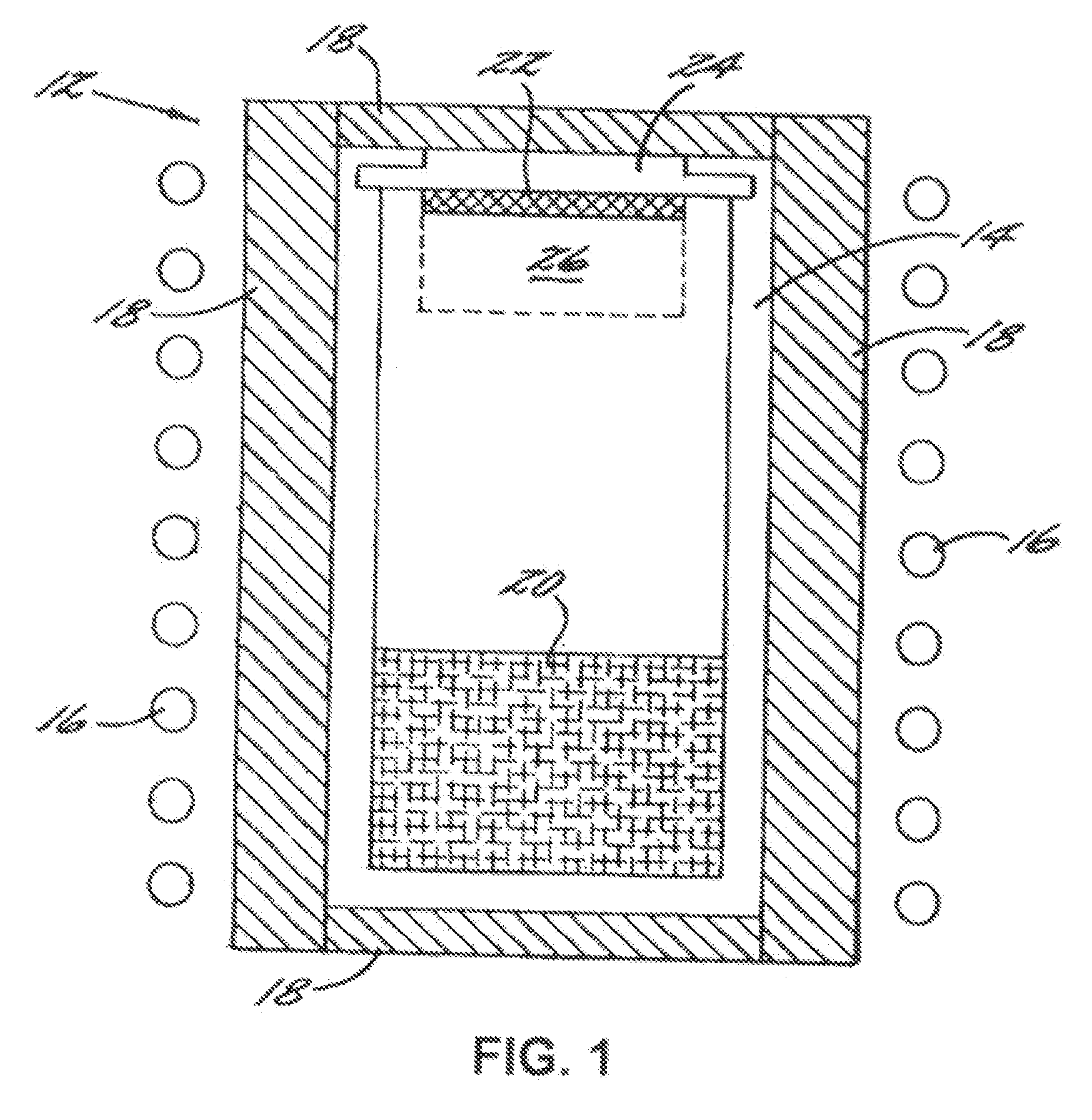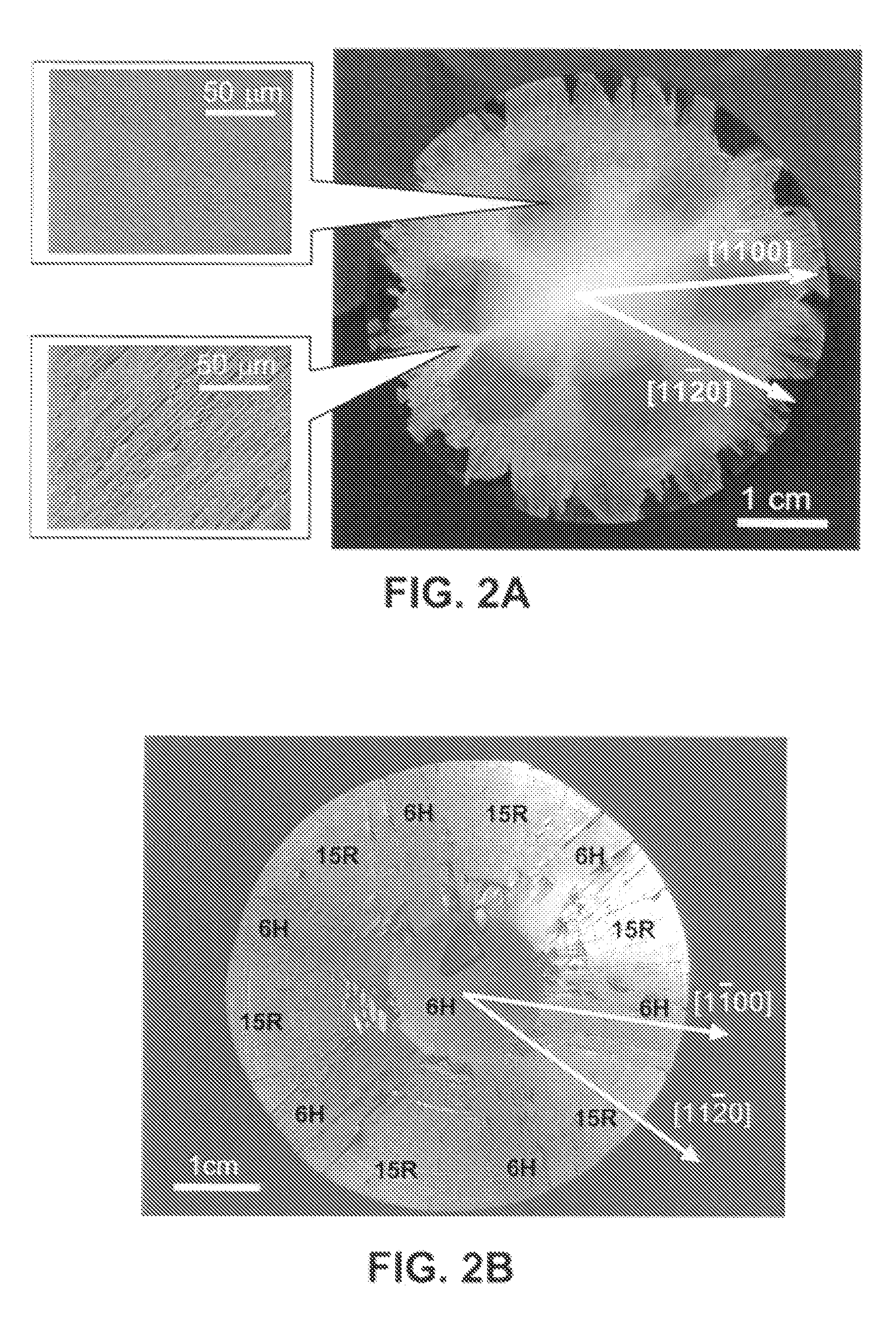Micropipe-free silicon carbide and related method of manufacture
a technology of silicon carbide and micropipes, which is applied in the direction of water-setting substance layered products, crystal growth processes, transportation and packaging, etc., can solve the problems of limiting the broader use of sic wafers, affecting device yield and reliability, and structural defects causing the effect of fabrication damag
- Summary
- Abstract
- Description
- Claims
- Application Information
AI Technical Summary
Benefits of technology
Problems solved by technology
Method used
Image
Examples
Embodiment Construction
[0026] Embodiments of the invention will now be described in relation to the accompanying drawings. However, the invention is not limited to only the embodiments described herein. Rather, the selected embodiments are presented as teaching examples.
[0027] For purposes of clarity, certain embodiments of the invention are described in the context of known processes and related equipment. Those of ordinary skill in the art will recognize that the scope of the invention are not limited to only these processes and associated equipment. Rather, as SiC growth processes and associated equipment change and evolve over the succeeding years, the teachings of the present invention will find ready application within these new contexts.
[0028] As is conventionally understood, a SiC boule may be grown using a seeded sublimation growth process, such as PVT, using a seeded sublimation system. Alternately, seeded sublimation systems may include high temperature CVD (HT-CVD) systems and halide CVD (H-...
PUM
 Login to View More
Login to View More Abstract
Description
Claims
Application Information
 Login to View More
Login to View More - R&D
- Intellectual Property
- Life Sciences
- Materials
- Tech Scout
- Unparalleled Data Quality
- Higher Quality Content
- 60% Fewer Hallucinations
Browse by: Latest US Patents, China's latest patents, Technical Efficacy Thesaurus, Application Domain, Technology Topic, Popular Technical Reports.
© 2025 PatSnap. All rights reserved.Legal|Privacy policy|Modern Slavery Act Transparency Statement|Sitemap|About US| Contact US: help@patsnap.com



